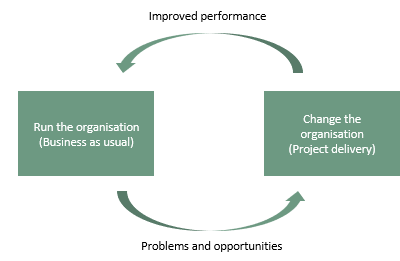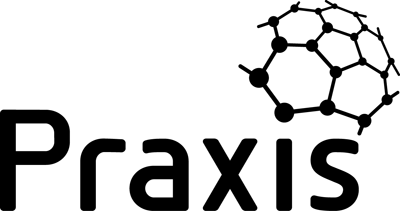Business Integrated Governance for Projects, Programmes and Portfolios (BIG) is an initiative that is being developed by the Core P3M Data Club – a loose affiliation of parties who are interested in harmonising organisational governance, particularly in relation to project delivery. BIG is being developed iteratively and Praxis Framework has partnered with the Club to produce and publish this minimum viable product (MVP). Updates will be published as the model develops and within these pages there are links to pre-release additional material. If you wish to be part of this project, you can join the LinkedIn group or contact the lead author of the model, David Dunning (davidjd66@hotmail.com). |
Organisations need timely, accurate and consistent information to facilitate effective governance and management. With different processes, technologies and information regimes in different parts of the organisation, this can be difficult.
Individual areas within the organisation do their best to govern and manage locally, but the overall picture is often neither consistent nor integrated. A single version of the truth does not exist and can seem almost impossible to achieve. If important oversight information is not available to key people, decision making may be delayed or inadequate. This impacts the path from strategy to delivery through the spine of the organisation and adversely affects the achievement of strategic objectives.
Some organisations try to solve this problem with more process and support functions, more sophisticated tools and even artificial intelligence, but this usually exacerbates the problem. People find it easy to blame lack of effective information on IT tools and overbearing processes. It is harder to put the blame onto lack of investment in the governance ecosystem, or the predominance of inappropriate culture. The answer lies in considering what is really needed to integrate governance throughout the organisation and how an effective model can be built from what already exists.
In recent years, projects and programmes have become the primary vehicle for changing the organisation through ‘transformation’. The distinction between ‘run the organisation' and 'change the organisation’ (and variations of it) has become common.
 Business Integrated Governance for Projects, Programmes and Portfolios (BIG) is a model that explains how to connect from strategic drivers to the operational parts of the organisation and those that focus on implementing change. It explains the importance of regular reviews and a logical approach to managing the underlying data that supports decision-making processes.
Business Integrated Governance for Projects, Programmes and Portfolios (BIG) is a model that explains how to connect from strategic drivers to the operational parts of the organisation and those that focus on implementing change. It explains the importance of regular reviews and a logical approach to managing the underlying data that supports decision-making processes.
The model also offers a project, programme and portfolio (P3) focus on governance and the supporting data backbone. This enables effective information sharing in areas such as resourcing, benefit realisation and performance management, coordinated with operational, commercial and finance functions.
Rather than creating a brand-new approach, the intent is to use what already exists in contemporary good practice and, wherever possible, to exploit the facilities and tools an organisation already has. When implementing BIG an organisation should derive what is needed by utilising and enhancing existing assets, rather than trying to replace the current governance ecosystem with something completely different.
Fundamental to the tailoring and application of BIG is a high-level understanding of the value it provides to key roles. While every organisation is different, the following role-based benefits will help that understanding:
In the project, programme and portfolio management (P3M) community:
-
Portfolio Directors will more easily understand strategic direction from the Main Board. This will enable them to better align organisational change with strategic priorities and provide timely performance feedback.
-
Programme Managers will be better informed about portfolio direction and priorities. They will be able to work consistently with project managers, finance professionals and operational management team leaders to implement change and realise benefits.
-
Project Managers will have a framework for common information sharing enabling greater collaboration in matters of finance, resources and co-ordination.
In the wider operational or Business as Usual (BAU) community
-
Main Board members will have greater confidence that the strategic objectives are resulting in outcomes and benefits and that the organisation has the agility to respond to changing external forces.
-
Finance Directors will have greater confidence that funding is allocated to the most beneficial initiatives, that business cases remain viable once started and performance is used to forecast as well as account.
-
Business Unit Directors will be able to see that resourcing and financing for both BAU and organisational change are in balance and remain as agreed, and that strategic objectives and business targets are being met.
-
Line managers will have visibility of the allocation of people to BAU and organisational change. They will be able to see that dependencies are coordinated effectively, change management is effective and benefit realisation is successful.
-
IT Directors will benefit from an holistic approach to solutions, which means fewer disconnected systems to maintain and integrate, greater adoption and better return on IT investments.
Thank you to the Core P3M Data Club for providing this page.





